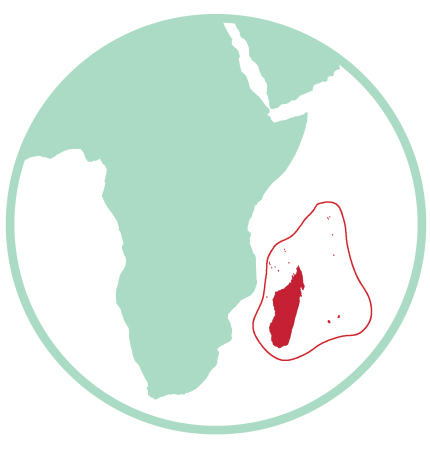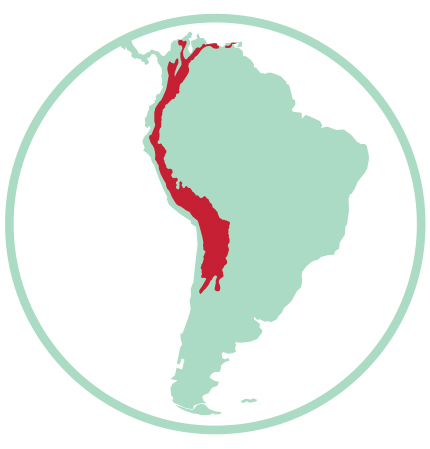Partnering with indigenous and local communities
Indigenous peoples and local communities whose lives are closely intertwined with nature are among conservation’s strongest allies. By partnering with, and learning from, those who live in and around the biodiversity hotspots, CEPF supports the development of conservation practices that deliver lasting benefits for people and biodiversity.
Madagascar and The Indian Ocean Islands Biodiversity Hotspot

Though it is one of the most isolated and least-developed regions of Madagascar, the 4,300-square-kilometer Barren Isles marine protected area faces many of the same threats seen across the western Indian Ocean: destructive fishing practices; conflicts between small-scale and industrial fishers; mining, oil and gas exploration; and climate change.
CEPF grantee Blue Ventures Conservation is working to counteract those pressures by forming a local fishers’ organization, Vezo Miray Nosy Barren Association (VMNB), and expanding the capacity of VMNB’s members through training and mentoring in fisheries management. The goal is to move the Barren Isles, the largest marine protected area in the country, from its current temporary protected status to permanent protection as a locally managed marine area co-managed by the VMNB.

“We made substantial progress toward securing protected status for the Barren Isles Marine Protected Area [MPA], which supports the livelihoods of thousands of local fishers,” said Cécile Fattebert, the Barren Isles project manager. “The MPA will also serve as a pilot site for the regional fisheries management plan.”
The local management approach, including participatory selection of areas where fishing is prohibited, is already making a difference. “Octopus fishers from Nosy Maroantaly have never caught such a big quantity,” said Robustin Letiny, vice president of the Management Committee of the Association Vezo Miray Nosy Barren. “We are convinced now that this technique of making octopus grow big is good for us. We have also observed that some species of fish have grown as well and multiplied, such as the mullet.”
Nearly all of the fishers in most villages are now registered VMNB members—no mean feat given the size of the protected area.
Blue Ventures has developed a community monitoring, control and surveillance system, and helped obtain a ministerial decree for adoption of the regional fisheries management plan.
Tropical Andes Hotspot

A peace accord signed in 2016 is allowing Colombia to emerge from more than 50 years of internal armed conflict. In Serranía del Pinche—a Key Biodiversity Area (KBA) and protected area in the country’s southwest—CEPF grantee Fundación Ecohabitats is engaging former combatants, as well as other residents, in mapping out a sustainable future.
Fundación Ecohabitats and its partner Agroenvironmental Association Santa Clara Serranía del Pinche are supporting a planning process involving local stakeholders, including community members who were formerly part of the Revolutionary Armed Forces of Colombia. Participants are updating the KBA’s management plan, undertaking ecological studies to identify priorities to expand the protected area, and developing a conservation plan to safeguard a Critically Endangered bird species found nowhere else: the gorgeted puffleg (Eriocnemis isabellae). Some former fighters are even being trained in bird monitoring.
“Conservation provides examples of sustainable development and ways for communities to overcome a long and tragic history of armed conflict, to come together and agree on the conservation of their lands,” said Fundación Ecohabitats’ Executive Director Liliana Patricia Paz Betancourt. “It is not only an opportunity to save wildlife; it is a chance for those who seek to change their lives.”
CEPF support has enabled Fundación Ecohabitats to hire local staff and fund the work of a representative of the Agroenvironmental Association Santa Clara Serranía del Pinche for 10 months. It has also made it possible to hire the services of approximately 20 local community members for food preparation, bird and plant inventories, and protected area monitoring. These individuals also coordinate economic and technical resources with the environmental authority and local government, and they have leveraged funding from the GEF Small Grants Program to carry out community territorial planning processes to define conservation areas.
Eastern Afromontane Hotspot

Along the southern border of Uganda’s Bwindi National Park, home to almost half of the world’s mountain gorillas (Gorilla beringei beringei), a unique partnership has taken hold between CEPF grantee Mbarara University of Science and Technology (MUST) and the indigenous Batwa people. Together, they are creating a means for the Batwa people to participate in park management committees, helping them negotiate natural resource usage rights, and improving the “Batwa Forest Experience,” an ecotourism venture at the edge of the national park.
When Bwindi National Park was established in 1991, the Batwa were forced to leave, creating a difficult social dynamic, pitting the rights of historically marginalized people against broader conservation goals.
“Uganda is now looking for answers to the Batwa plight,” said MUST’s Medard Twinamatsiko Katonera. “We hope their culture will be celebrated through the Batwa Forest Experience as they reconnect to their natural world and conserve this great forest.

“We are training 20 Batwa tour guides, 20 Batwa dancers and about 22 Batwa in enterprise development, financial management, negotiation and basic research skills,” he said. The project brought the Batwa together under the Bwindi Batwa Community Development Association (BBCDA), and has enabled them to voice their concerns to the Uganda Wildlife Authority (UWA), local government and other stakeholders.
In 2018, the project also helped place two Batwa representatives on the Revenue Sharing Project Management Committee and two Batwa representatives on the Problem Animal Management Committee. UWA recruited one of its first Batwa rangers, John Kaheru, who can now participate in decision-making about protecting Bwindi’s forest.
MUST’s efforts come at a time of conservation success for the flagship species of the region. The IUCN Red List of Threatened Species downlisted the mountain gorillas from Critically Endangered to Endangered due to population growth resulting from effective conservation. Empowering the Batwa to conserve their culture and get their voices heard will build on that success and allow these former inhabitants of Bwindi to thrive with it.
Photo Credits
Meeting of the Akio Kary (tiger shark) monitoring, control and surveillance group in Ampandikoara in the Barren Isles. © Blue Ventures
Visiting the Batwa Forest Experience Trail in Bwindi National Park, Uganda. © Medard Twinamatsiko, CEPF BBC Project Leader, Mbarara University of Science and Technology



